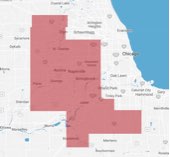Radon Levels and the Value of Time

When speaking with customers daily, they often ask about their radon levels and how long they’ve been exposed. One client asked, “I used to ride my bike in my basement as a kid, then moved my bedroom down there ~ am I doomed??” Our advice is always, don’t throw in the towel just yet. As an advocate for radon education, we want to provide information in relative terms for everyday use.
When we hear of radon readings, in terms of pCi/L and the “number,” what does all that stuff mean? All of the radon information that is produced in the marketplace takes into consideration that you are exposed 70% of the time. So, we know that we spend our hours sleeping in our home, spend time before & after work and school, and spend time on weekends and other occasions. This type of lifestyle represents 70% of our time being spent in our homes. So let’s use the example of 4 pCi/L. By now, you may know that level 4 is equivalent to a non-smoker smoking 8 cigarettes per day. Let’s look at a few different scenarios and their potential impact.
Radon Exposure Scenario 1:
You have a home-based business, or you are allowed to work from home, or are a stay-at-home parent or retiree. In this case, a radon reading of 4 pCi/L is much, much more significant – because you are home in excess of the average 70%. In this case, you may leave only to do errands and everyday occurrences. Your relevant exposure is going to be higher in this case, therefore potentially having a much bigger impact on your long-term health.
Radon Exposure Scenario 2:
You have a job that requires you to travel for work the majority of the week, such as outside sales, training, or consulting, to name a few. This type of person is actually exposed less than the 70% average for the pure fact that they physically are not home as much. Make sense?
Radon Exposure Over Time
Your time exposed is multiplied by the amount of radiation, which equals your dose. So if you live in a home with 1 pCi/L for 7 years, it’s the same as living in a home with 7 pCi/L for 1 year. It’s the same amount of exposure in both cases. If you are fortunate enough to live in a home where your radon reading is 1.3 pCi/L to 1.5 pCi/L, then your home is considered “average.” Keep in mind other radiation exposure, such as X-rays for medical/dental, cell phones, and even cosmic radiation emitted from the atmosphere. Radon is the single greatest contributor of radiation to the average person and accounts for more than 50% of your person’s total radiation exposure for their lifetime. As always…test, test, and test. Once this is done, mitigate as necessary. This is definitely something that you can control and provide protection for your loved ones!!
If you have found this content useful, please consider sharing it via social media! Help Guardian Radon get the word out! We have worked in homes throughout the Chicagoland area since 2008, keeping the air families breathe clean.
*Special thanks to Radonawareness.org for providing some of the content above.
Back To Blog






